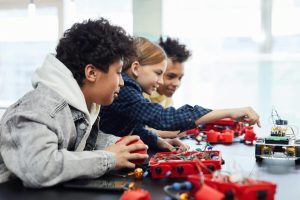Bridging Learning Gaps in Post-Pandemic Education
The global pandemic caused by COVID-19 has greatly impacted the education system, causing schools and universities to close down and shift to remote learning. While this transition has allowed for education to continue, it has also highlighted the significant learning gaps that exist within our education system. As we emerge from the pandemic and return to in-person learning, it is crucial to address and bridge these learning gaps in order to ensure that students are receiving a quality education. In this article, we will explore the impact of the pandemic on education and discuss effective strategies for bridging learning gaps in post-pandemic education.
The Impact of the Pandemic on Education
The sudden shift to remote learning due to the pandemic has led to significant disruptions in the education system. With limited resources and support, many teachers and students struggled to adapt to this new mode of education. This has resulted in numerous challenges and setbacks, especially for marginalized students who face additional barriers.
Loss of Contact and Social Interaction
One of the main challenges of remote learning is the loss of face-to-face contact and social interaction. This has negatively affected the social and emotional well-being of students, leading to feelings of isolation and loneliness. As a result, students may struggle to engage and participate in their education, leading to a decline in academic performance.
Unequal Access to Technology
With remote learning, access to technology and internet connectivity has become essential for students to continue their education. However, not all students have equal access to these resources. Low-income families and rural communities may lack the necessary technology and internet infrastructure, creating a digital divide that further widens the learning gap between students.
Inconsistent Learning Environment
The sudden shift to remote learning has resulted in an inconsistent learning environment for students. With different schools and organizations implementing different methods and policies for remote learning, students may struggle to adapt and stay on track with their education. This inconsistency can result in a fragmented learning experience and hinder the development of important skills and knowledge.
Bridging Learning Gaps in Post-Pandemic Education
To ensure that students receive a quality education and bridge the learning gaps caused by the pandemic, it is crucial to implement effective strategies.
Addressing the Social and Emotional Needs of Students
The emotional toll of the pandemic on students cannot be ignored. It is important for schools to prioritize the social and emotional well-being of students by providing mental health resources and creating a supportive and inclusive learning environment. This will help students feel more connected and engaged in their education.
Investing in Technology and Internet Infrastructure
In order to bridge the digital divide, it is important for schools and organizations to invest in technology and internet infrastructure. This may include providing students with necessary devices and ensuring reliable internet access. It is also important to provide training and support for teachers and students to effectively use technology for learning.
Standardizing Remote Learning Practices
To ensure consistency in the learning experience, it is important to standardize remote learning practices. This can include providing clear guidelines and expectations for students, as well as offering professional development for teachers on effective methods and tools for remote teaching.
Implementing Individualized Learning Plans
With the disruption to traditional education, it is important to address the individual needs and learning styles of students. Schools can do this by implementing individualized learning plans, which tailor education to the unique needs and abilities of each student. This can help bridge learning gaps and promote a more inclusive and effective learning experience.
Conclusion
The pandemic has highlighted the importance of addressing learning gaps in our education system. As we transition out of the pandemic, it is crucial to implement effective strategies to bridge these gaps and ensure that all students have access to a quality education. By addressing the social and emotional needs of students, investing in technology, standardizing remote learning practices, and implementing individualized learning plans, we can create a more equitable and effective education system in the post-pandemic era.










